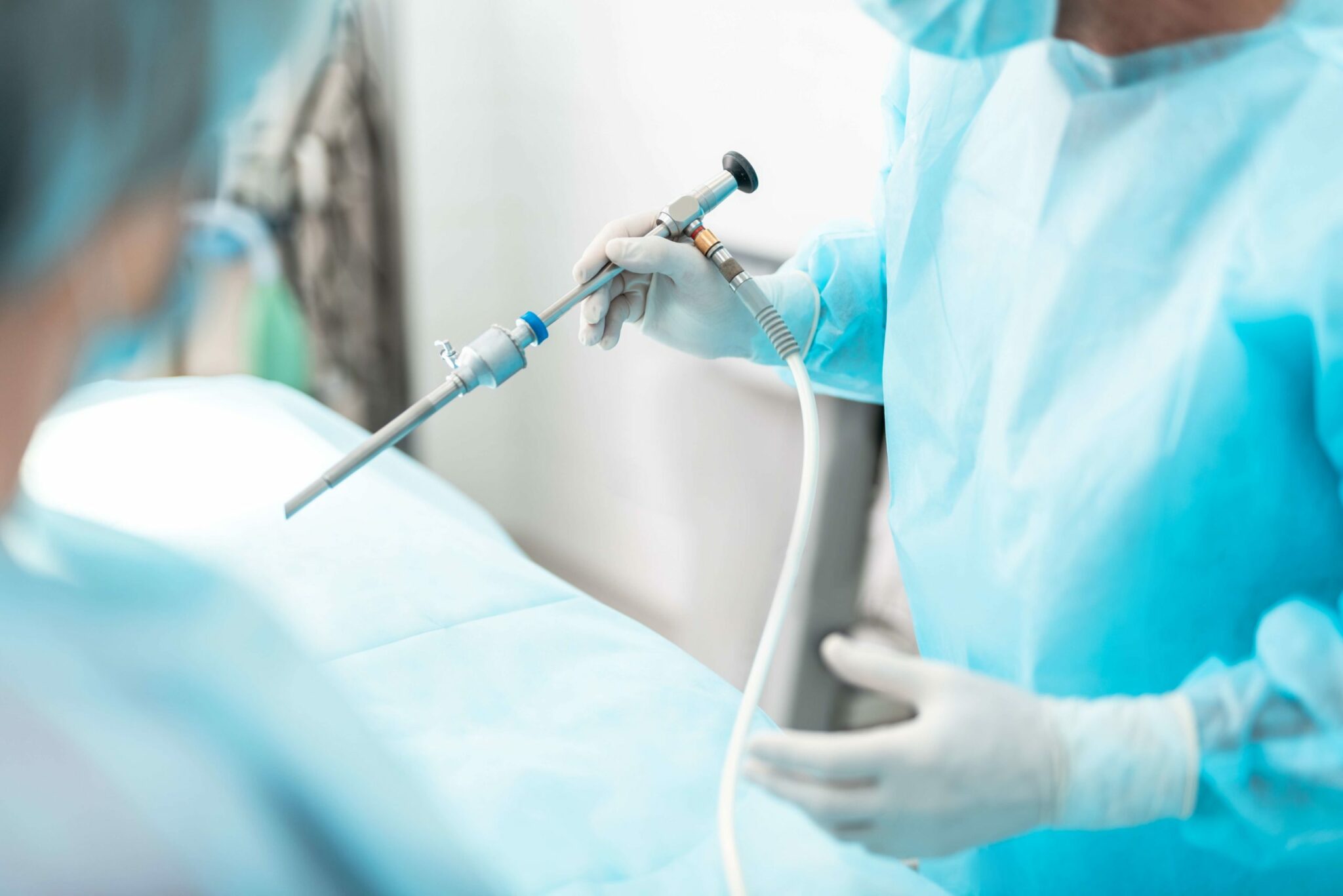كيف يتم تشخيص بطانة الرحم الهاجرة؟

Endometriosis Diagnosis can be challenging because the symptoms are often difficult to distinguish from irritable bowel syndrome; symptoms such as diarrhea, constipation and abdominal cramping are frequently seen with either or both conditions. Other symptoms, such as heavy and painful periods, and migraines, may be dismissed as normal ‘monthly women problems’. As well as regularly presenting with symptoms that are indistinguishable from other conditions, there is also a great deal of variability from patient to patient, further complicating diagnosis. 20-25% of women with endometriosis are asymptomatic, suggesting that the cited incidence rate of 6-10% of the female population having endometriosis, is probably an under-estimation. Due to the inefficiency of the diagnostic tools currently in place, it very often takes years to diagnose a woman with endometriosis.
Diagnostic techniques
If you suspect you have endometriosis, the first thing your doctor will do is examine your tummy and pelvis. They will feel for any abnormalities, such as cysts around your ovaries. Of course there are other conditions that cause cysts to form on the ovaries, so this alone is not sufficient to diagnose endometriosis. The current ‘gold standard’ test for endometriosis is to perform a laparoscopy. This is a procedure performed under general anaesthetic, where a small tube is passed through a cut in your abdomen. The surgeon will use a camera to view any abnormal tissue. Ideally, at least a single biopsy will be taken at the same time, for further histological analysis. Histological diagnosis is usually accurate and, if this supports a positive diagnosis, an appropriate treatment plan can be implemented.
Alternative, non-invasive tests, such as transvaginal ultrasound and MRI scans have been shown to have very good accuracy at diagnosing deep endometriosis, particularly when used in combination. Accuracy of diagnosis can be as high as 95%, which matches the level seen with laparoscopy. Deep endometriosis is thought to affect up to 20% of patients. The main advantage to these imaging techniques is that they are less invasive than the current tests of choice and their popularity in the clinical setting is likely to continue to grow.
The future for endometriosis diagnosis
An understudied area of research for the diagnosis of endometriosis is the identification of serum biomarkers of the condition. Levels of a protein, CA-125, are often raised in patients with endometriosis. However, as a general marker of inflammation, it is not specific to endometriosis and can be indicative of an alternative inflammatory condition such as appendicitis, pelvic infection or ovarian cysts. Ideally an endometriosis-specific marker, or panel of markers, will be found, enabling accurate diagnosis using a simple blood test, negating the need for more invasive treatment.
Nabta is reshaping women’s healthcare. We support women with their personal health journeys, from everyday wellbeing to the uniquely female experiences of fertility, pregnancy, and menopause.
Get in touch if you have any questions about this article or any aspect of women’s health. We’re here for you.
Sources:
- Bazot, M, and E Daraï. “Diagnosis of Deep Endometriosis: Clinical Examination, Ultrasonography, Magnetic Resonance Imaging, and Other Techniques.” Fertility and Sterility, vol. 108, no. 6, Dec. 2017, pp. 886–894., doi:10.1016/j.fertnstert.2017.10.026.
- Hickey, M, et al. “Endometriosis.” BMJ, vol. 348, 19 Mar. 2014, p. g1752., doi:10.1136/bmj.g1752.
- Kennedy, S, et al. “ESHRE Guideline for the Diagnosis and Treatment of Endometriosis.” Human Reproduction, vol. 20, no. 10, Oct. 2005, pp. 2698–2704., doi:10.1093/humrep/dei135.
- May, K E, et al. “Peripheral Biomarkers of Endometriosis: a Systematic Review .” Human Reproduction Update, vol. 16, no. 6, 2010, pp. 651–674., doi:10.1093/humupd/dmq009.
- Overview: Endometriosis. NHS, www.nhs.uk/conditions/endometriosis/. Page last reviewed: 18/01/2019.
- Endometriosis. Mayo Clinic, 24 July 2018, www.mayoclinic.org/diseases-conditions/endometriosis/symptoms-causes/syc-20354656.










